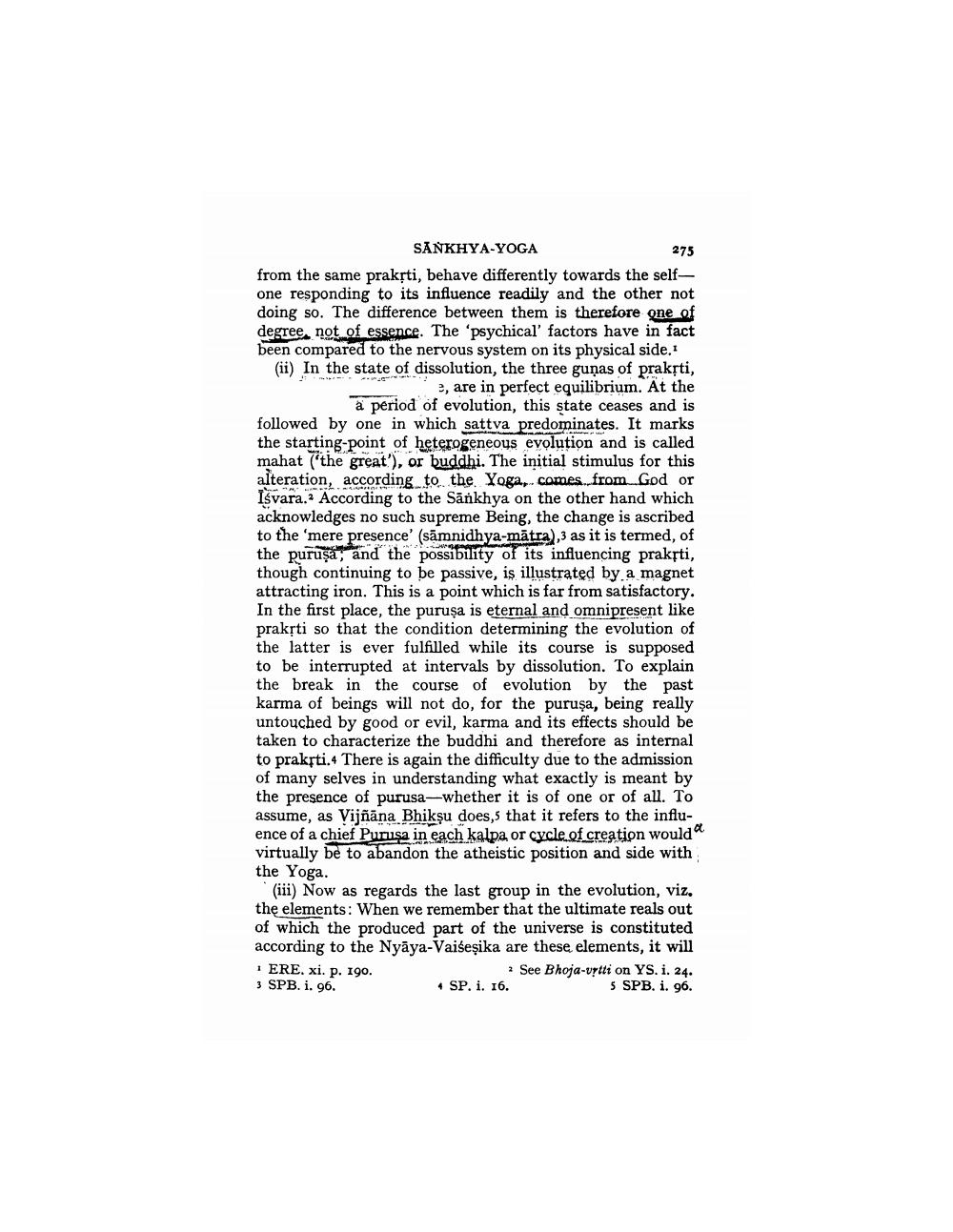________________
SANKHYA-YOGA
275 from the same praksti, behave differently towards the selfone responding to its influence readily and the other not doing so. The difference between them is therefore one of degree, not of essence. The 'psychical factors have in fact been compared to the nervous system on its physical side. (ii) In the state of dissolution, the three guņas of praksti,
2, are in perfect equilibrium. At the
a period of evolution, this state ceases and is followed by one in which sattva predominates. It marks the starting point of heterogeneous evolution and is called mahat ('the great'), or buddhi. The initial stimulus for this alteration, according to the. Yoga..comes...from..God or Isvara. According to the Sankhya on the other hand which acknowledges no such supreme Being, the change is ascribed to the 'mere presence' (sāmnidhya-matra),3 as it is termed, of the puruşa; and the possibility of its influencing praksti, though continuing to be passive, is illustrated by a magnet attracting iron. This is a point which is far from satisfactory. In the first place, the purusa is eternal and omnipresent like praksti so that the condition determining the evolution of the latter is ever fulfilled while its course is supposed to be interrupted at intervals by dissolution. To explain the break in the course of evolution by the past karma of beings will not do, for the puruşa, being really untouched by good or evil, karma and its effects should be taken to characterize the buddhi and therefore as internal to prakrti. There is again the difficulty due to the admission of many selves in understanding what exactly is meant by the presence of purusa-whether it is of one or of all. To assume, as Vijñāna Bhikṣu does,5 that it refers to the influence of a chief Puruşa in each kalpa or cycle of creation would" virtually be to abandon the atheistic position and side with the Yoga
(iii) Now as regards the last group in the evolution, viz, the elements: When we remember that the ultimate reals out of which the produced part of the universe is constituted according to the Nyāya-Vai esika are these elements, it will 1 ERE. xi. p. 190.
See Bhoja-vrtti on YS. i. 24. 3 SPB. i. 96. 4 SP. i. 16.
5 SPB. i. 96.




